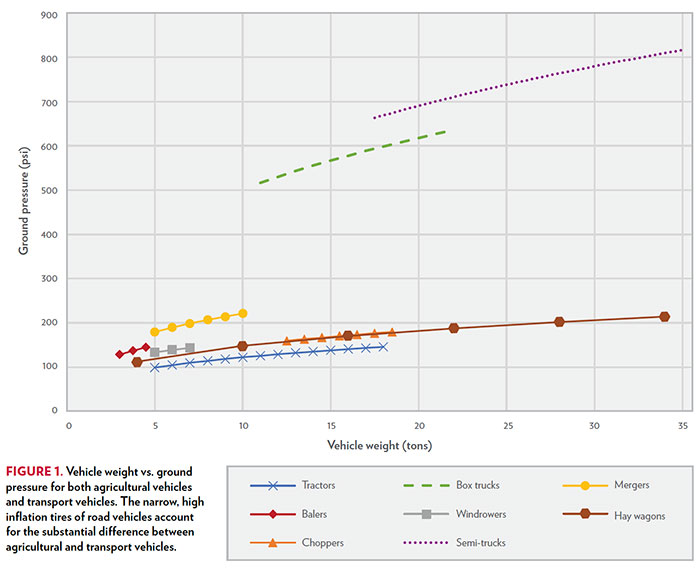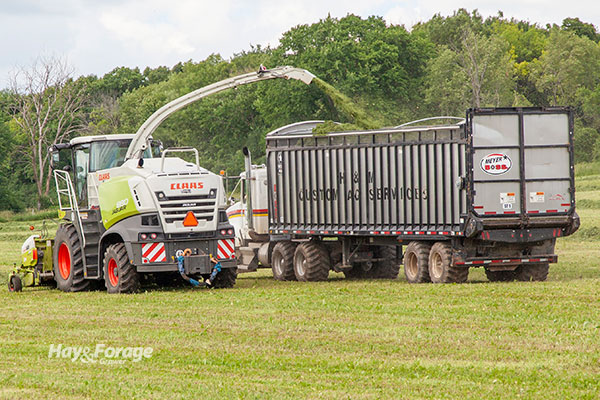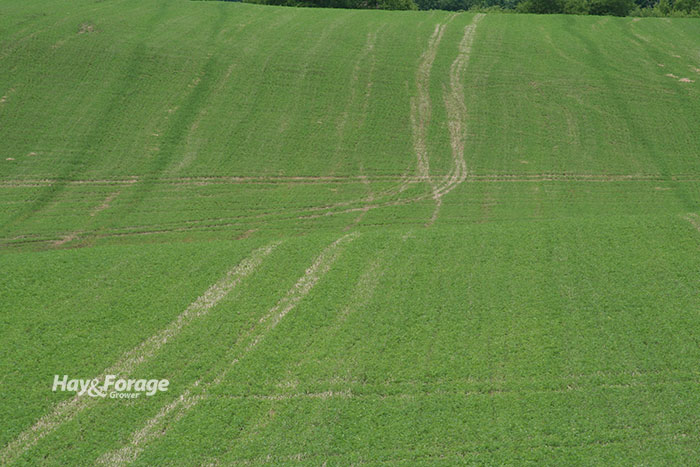Tires make a difference in alfalfa fields |
| By Mike Rankin, Managing Editor |
|
|
|
Alfalfa has always been a crop that is more than happy to tell you when it’s hurting. There’s the distinctive “hopperburn” from potato leafhoppers, a funky looking “shepherd’s hook” caused by anthracnose, and those characteristic leaf margin spots brought on by potassium deficiency, just to name a few of the ways alfalfa informs us that it needs an intervention. As farms, fields, and equipment have become larger, we now see another common sight — the slow green up or browning where tires once rolled less than 10 days earlier. This never used to be a problem. So, what gives? Researchers at the University of Wisconsin-Madison offer some insight into what is happening in our alfalfa fields in the bulletin How much ground pressure am I applying with my different tire and vehicle configurations? The ground pressure as a function of vehicle type and weight was determined for common hay harvesting equipment (see Figure 1). Semitrucks and trailers and box trucks equipped with highway tires offered significantly greater ground pressure than any of the agricultural equipment. This was because of the narrow footprint of road tires and their high tire inflation pressures.  Of the agricultural vehicles, the highest ground pressure was caused by pull-type mergers, even though these are only half the weight of some forage choppers. Most mergers carry all of their weight on two tires. The agricultural engineers emphasize that tire pressure is a large factor affecting the applied ground pressure, and that it’s a linear relationship. Semitrucks and trailers are extremely efficient moving forage from the field to the storage facility. Using a tractor and forage box or a box truck equipped with highway tires have similar efficiencies, but the former will result in applying less ground pressure than the latter. Many forage producers who have realized the excessive damage being caused by highway tires on either semis or box trucks are equipping their vehicles with flotation-type tires rated for field or highway use. These specialized tires require lower air pressure and are wider to help distribute weight over a larger area.  Wider, flotation-type tires on semitrucks and trailers help to mitigate some of the wheel track damage caused by highway tires. Previous research has demonstrated that alfalfa yield loss from wheel-traffic can be caused by both soil compaction and the breaking off of new stem tillers. The latter issue is why more damage is done when there is an extended time between mowing and chopping or baling. The agricultural engineers offer the following recommendations to mitigate wheel-track damage to alfalfa fields: • Equip trucks and semitrailers with flotation-type tires rated for both highway and field use. Avoid using highway tires for field use. • Utilize tractors, grain carts, and dump carts as much as possible and transfer the harvested crop to trucks at the edge of the field, especially if soils are wet. • Identify and maintain “in-field roads” during harvest and limit field travel to those locations as much as possible. • Follow the tire manufacturer’s recommendations and specifications for tire inflation. |

